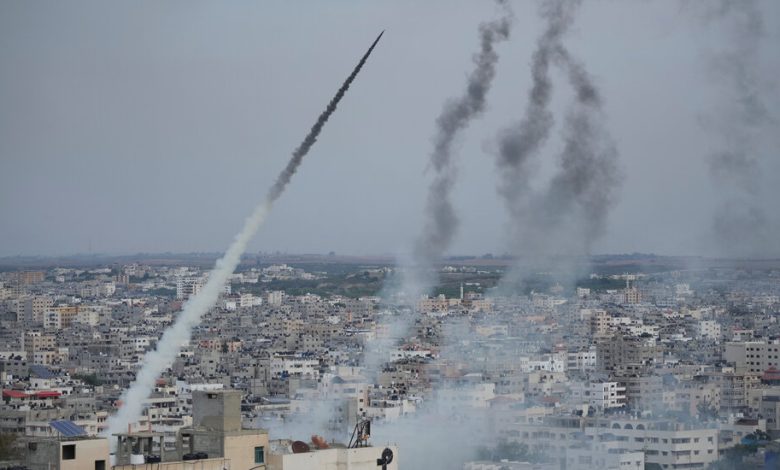Hamas’s Control of Gaza Must End Now

It’s easy to note the parallels between Hamas’s attack on Israel on Saturday morning and the Yom Kippur war, which began 50 years ago Friday.
Now, as then, Israel seems to have been taken almost wholly by surprise by an enemy whose capabilities it appears to have badly underestimated. Now, as then, Israelis have sustained losses — at least 250 dead, over 1,000 wounded and dozens of hostages taken in just the first few hours of fighting, according to Haaretz — that go far beyond anything they suffered in recent years. Now, as then, there looms the prospect of a wider and deadlier war — the last time with the Soviet Union, this time with Iran and its proxies in Syria and Lebanon.
Now, as then, Israel’s military, intelligence and political leaders can soon expect hard questions about their failure to anticipate this attack. The Yom Kippur war helped end the Labor Party’s iron grip on power in Israel. This war might yet do the same for the Likud’s.
There are parallels on the Arab side, too. Like Egypt’s and Syria’s in 1973, Hamas’s aims in this war almost surely have strategic purposes that go beyond killing, maiming and terrorizing Israelis.
Hamas is attacking Israeli civilians in a way that is clearly calculated to provoke a devastating Israeli response, one that Prime Minister Benjamin Netanyahu of Israel promises is coming. Large numbers of Palestinian casualties will probably derail a peace deal between Israel and Saudi Arabia — not just by inflaming Muslim opposition to the Jewish state but also by giving Israel’s far right a stronger argument to oppose any accommodations with Palestinians as a price of the deal.
But there are additional parallels that augur less well for Hamas.
In 1973, Israel was able to recover from its initial setbacks to destroy its enemies on the battlefield, leaving them incapable of ever again posing a serious threat to Israel. And, with the help of U.S. diplomacy from both Republican and Democratic administrations, the Yom Kippur war led to the 1978 Camp David accords between Israel and Egypt.
This war, too, can lead to a similar outcome among Jerusalem, Riyadh and Washington, provided all sides adopt the same watchword: Liberate Gaza.
What does that mean?
In January 2009, I interviewed Netanyahu for The Wall Street Journal, right as the first major conflagration between Israel and Hamas was winding down and as he was about to return to power. Though he praised the performance of the military, he was withering about the political outcome.
“Notwithstanding the blows to the Hamas, it’s still in Gaza, it’s still ruling Gaza,” he told me. He stressed that regime change in Gaza — that is, overthrowing Hamas and reinstalling the Palestinian Authority — was the “optimal outcome” but added that “the minimal outcome would have been to seal Gaza” from its supplies of rockets and munitions.
Several wars and nearly 15 years later, Hamas is still ruling Gaza, and the munitions have kept pouring in. Though Netanyahu might publicly rue this, the status quo has served his political and ideological interests in multiple ways.
Hamas’s control of Gaza has hopelessly divided Palestinian politics. It has provided a modicum of stability in Gaza itself by way of despotic intolerance for domestic dissent. It has served as an advertisement to Israelis as to why they can’t afford to relinquish the West Bank to Palestinian control, lest it become another Gaza. And it has done all this at an acceptable price in Israeli lives. Thanks to defensive systems like Iron Dome, Hamas’s punches, while frequent and menacing, rarely landed. For Israelis, Gaza seemed relatively contained.
That was, until this weekend. Whatever happens next in the current war, this concept (to borrow another term from the Yom Kippur war era, related to Israel’s confidence that it wouldn’t be attacked) has clearly failed. Israel has a clear interest not just in punishing Hamas but also in ending its rule for good. But how can it do so without either allowing it to descend into anarchy or reoccupying the territory, which Israel doesn’t want?
The answer is to turn Gaza into a zone of shared interests. Despite its anti-Israel public rhetoric, Saudi Arabia has long distrusted Hamas because of its close military ties to Iran. Egypt sees Hamas as the Palestinian arm of the Muslim Brotherhood, which it ruthlessly suppresses at home. The ailing Palestinian Authority views Hamas as its principal rival for power. And the United States long ago designated Hamas as a terrorist group.
Could Israel finally dislodge Hamas from power and invite Saudi Arabia, Egypt and maybe the United Arab Emirates to deploy a substantial peacekeeping force to the strip? That would serve Israel’s interests in toppling an enemy and the Arab states’ interests in diminishing a rival.
Could the Palestinian Authority resume civil control over the strip, with security furnished by Arab states and economic aid from the gulf states, Washington and Brussels? That would give Ramallah the control over Gaza it has lacked for 16 years, strengthen secular forces in Palestinian politics and free Gazans from extremist tyranny.
Could Israel and Egypt ease their restrictions on Gaza’s economy and the movement of its people in exchange for guarantees that the strip won’t again turn into a haven for havoc? That would give the Saudis the opportunity to show that any agreement they make with Israel would help ordinary Palestinians.
And can the Biden administration make itself a vital partner in the diplomatic effort, bringing to fruition what the Trump administration started with the Abraham Accords, just as the Carter administration brought to fruition what the Nixon and Ford administrations started after the Yom Kippur war? That would be no small victory for a president who dearly needs one.
It’s too soon to tell how closely this war will resemble the one that nearly destroyed Israel 50 years ago. It’s not too soon to start thinking about how this disaster could have the best possible outcome.
The Times is committed to publishing a diversity of letters to the editor. We’d like to hear what you think about this or any of our articles. Here are some tips. And here’s our email: [email protected].
Follow The New York Times Opinion section on Facebook, Twitter (@NYTopinion) and Instagram.





